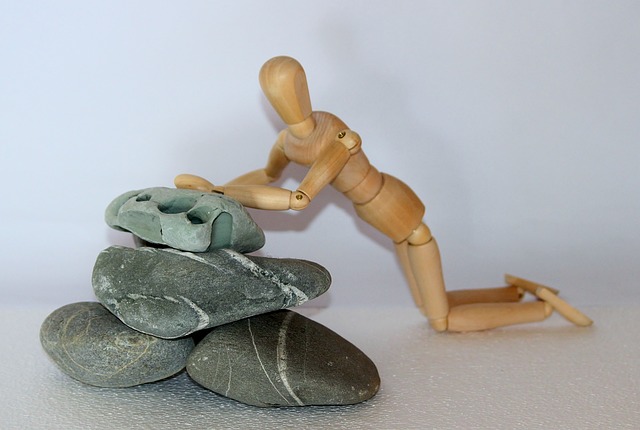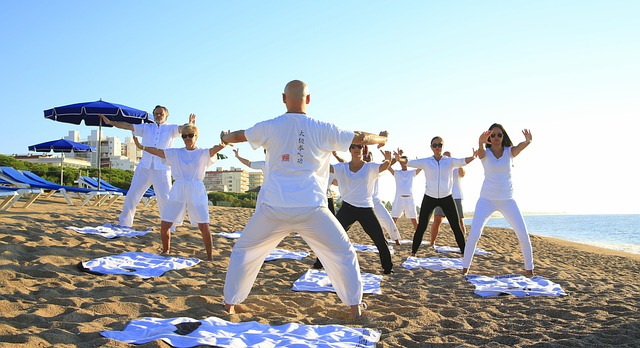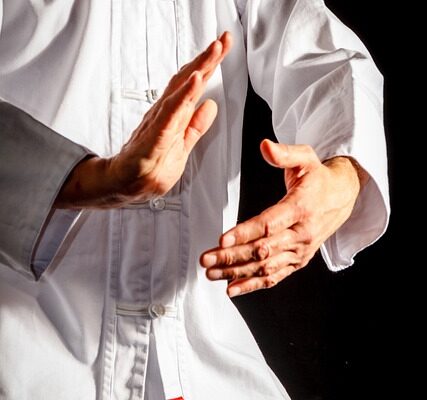Tai chi can provide numerous health and well-being benefits. But does it qualify as exercise? And what fitness benefits can you expect from doing it regularly?
According to the CDC, Americans require 150 minutes of moderate activity per week, including two days of muscle strengthening. There are circumstances where tai chi can count towards both of these physical activity standards, depending on the style you practice and your unique fitness level.
This may be the case, for example, for people suffering from chronic pain, arthritis, or limited mobility, for whom exercise would otherwise be burdensome or out of reach, according to Rhayun Song, Ph.D., at Chungnam National University in Korea and director of the university’s Health Education and Research Center.
“The technique of practicing tai chi — the slow, gentle movements, bending knees, using weight transfer — leads to far greater benefits than regular walking,” explains Dr. Song, a certified Tai Chi Master Trainer since 2004.
She claims that incorporating this exercise into your daily life can result in “substantial gains” for People suffering from arthritis, mobility problems, flexibility concerns, and stress.
It can be a fantastic exercise to challenge your flexibility and muscle power while integrating your mind with your body for people who are able-bodied and in good health, according to Song.
Why Is Tai Chi Beneficial for Fitness?
Tai chi is a mind-body workout that originated in ancient China, where its roots began in martial arts, according to Paul Lam, MD, a family physician and tai chi instructor for over 40 years. Dr. Lam and his medical team established the Tai Chi for Health Institute in 2010 with the goal of developing tai chi workouts to improve health concerns such as osteoporosis, diabetes, and fall prevention.

Consider tai chi to be a multicomponent workout, according to Kristi Hallisy, a certified fitness expert for older persons as well as a tai chi fundamentals certified instructor. She has assisted in the development of rehabilitation programs based on tai chi fundamentals to promote healthy aging and fall prevention.
Muscle-Strengthening Advantages
For starters, tai chi is a full-body workout with muscle strengthening in which you stand upright, move gently as if pushing against moderate resistance, and then transfer your weight and hold poses such as balancing on one leg or remaining in a squat position, according to Hallisy.
According to Shirley Chock, owner and executive director of Aiping Tai Chi, a tai chi school in Milford, Connecticut, this exercise can be especially effective for building back strength in people undergoing physiotherapy following an injury, as well as for seniors who want to improve their mobility and prevent falling.
One study involving 702 participants, published in the Journal of the American Geriatrics Society, discovered that 16 one-hour weekly community-based tai chi courses cut the number of repeated falls by 67 percent.
“I’ve had folks in rehab take five sessions and learn the moves to change their balance, strength, and confidence with daily walking or ascending the stairs,” Hallisy says of her patients.
Aerobic Advantages
According to their findings, published in the American Journal of Epidemiology, researchers analyzed more than 61,400 men in China and discovered that those who performed tai chi regularly cut their risk of death as much as their counterparts who took up running for exercise. Another study discovered that practicing tai chi on a daily basis enhanced cardiovascular health, particularly heart and lung health, even in healthy individuals.
According to research, this exercise is also beneficial for reducing waist circumference, particularly in people over the age of 50. A research in 2021 followed 550 persons over the age of 50 for 12 weeks, randomly assigning them to tai chi for three one-hour sessions per week, aerobic exercise plus strength training three times per week, or no exercise at all. Both the tai chi and standard aerobic exercise groups dropped weight around the waist. Those who practiced tai chi, on the other hand, lost 0.7 inches more than those who did brisk walking with strength training.
Advantages of Mental Fitness
It’s also a cerebral workout for everyone, as it teaches deep breathing methods, mindfulness, and conscious movement.
“Practice teaches you to be present at the moment, aware of your surroundings, and in sync with your body. “This allows you to move in a more synchronized manner,” Chock explains.
So, can Tai Chi qualify as part of my weekly physical activity?
Absolutely, it is considered physical activity. However, whether or not performing this exercise counts toward your weekly aerobic and strength training goals is dependent on the intensity of your practice and your fitness level.
According to Hallisy, it is a “mild to moderate aerobic workout,” however, this depends on the practitioner’s technique and fitness level. Some tai chi lineages cross over into martial arts, which can dramatically increase the intensity.
According to Chock, focusing on the challenge of balance and increasing muscle strength from a tai chi session can be an adequate full-body workout for an older adult with low aerobic fitness.
However, for someone who consistently does HIIT workouts multiple times per week and does a large amount of strength training, slower-paced sessions may not provide a sufficient strength or cardio workout. According to Chock, a more difficult, faster-paced kind of tai chi, such as Chen tai chi, may provide a challenging workout.
It’s also worth noting that even those with a high level of fitness may prefer a calmer style of tai chi with slower motions for a rest day in between hard aerobic practices.

These are four guidelines for getting started, regardless of your age or physical level:
1. Choose Your Personal Style
If you want to begin practicing tai chi, first choose which form is best for you. According to Lam, there is the Chen style (the oldest form, with fast, alternating motions), the Yang style (the most common version performed today, with calm, steady movements), and others.
Most styles feature a modified version that includes remaining seated for some — or all — of the class, utilizing a chair or the wall for extra balance when needed, or keeping both feet firmly planted on the ground, so the practice can be changed for persons of varying physical abilities.
2. Emphasize safety if you have limited mobility or fitness.
If it’s your primary workout due to a previous injury or concerns with balance and stability, Lam recommends prioritizing your safety first and choosing a mild form you can safely practice for roughly 10 minutes per day.
3. Don’t Let Your Age Hold You Back
Tai chi’s reputation as a mild workout should not deter younger Americans from participating in the practice, according to Chock. Her students range in age from 12 years old to 90 years old. While the lessons they choose and the benefits they gain may differ depending on their age, she believes the practice has the same underlying benefit: stress release and mindfulness.
4. Maintain Consistency in Your Practice
Consistent practice is the key to achieving results: To develop a regimen, Lam recommends doing tai chi for at least 10 minutes each day, but ideally for 20 to 30 minutes per day. It can be incorporated into a full workout routine, including cardio and weight training, or used as a single exercise for resistance training for people with lesser fitness levels, according to Hallisy.
Within a few months of practice, you’ll see improvements in your posture, balance, flexibility, and leg strength.
According to Hallisy, clinical investigations show that you can see effects in as short as six weeks to three months, but you’ll need to keep practice consistently to maintain your enhanced mobility.
“If you stick with it long enough, you’ll realize it’s the mind’s intention that drives the movements. “It’s about releasing physical tension and mental pressures,” Chock explains.
“The point is whether this activity is fascinating enough to hold people’s attention for that amount of time while still being safe enough for them to continue doing,” Song adds. More mobility, in general, leads to better fitness and health advantages, she adds.
To Conclude
Tai chi is a practice that consists of slow, gentle motions and physical postures, as well as a contemplative state of mind and controlled breathing. This exercise started in China as an ancient fighting technique. It also has become more focused on health promotion and rehabilitation throughout the years.
It is particularly popular among seniors because of the gentle movements it provides. It does, however, necessitate a great deal of balancing and the right breathing skills.
This courses are frequently held outside. Perhaps you might look into Tai Chi classes in your area and gain some expertise with this activity, particularly if you enjoy outdoor activities.
